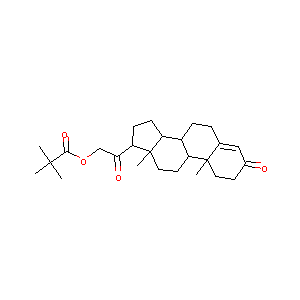| 1 |
Recurrent recessive mutation in deoxyguanosine kinase causes idiopathic noncirrhotic portal hypertension.Hepatology. 2016 Jun;63(6):1977-86. doi: 10.1002/hep.28499. Epub 2016 Mar 31.
|
| 2 |
Sitagliptin FDA Label
|
| 3 |
URL: http://www.guidetopharmacology.org Nucleic Acids Res. 2015 Oct 12. pii: gkv1037. The IUPHAR/BPS Guide to PHARMACOLOGY in 2016: towards curated quantitative interactions between 1300 protein targets and 6000 ligands. (Ligand id: 6286).
|
| 4 |
ClinicalTrials.gov (NCT01619332) Clinical Safety, Tolerability, Pharmacokinetics and Pharmacodynamics of LEZ763. U.S. National Institutes of Health.
|
| 5 |
Drug information of Desoxycorticosterone Pivalate, 2008. eduDrugs.
|
| 6 |
Novel therapeutics for type 2 diabetes: incretin hormone mimetics (glucagon-like peptide-1 receptor agonists) and dipeptidyl peptidase-4 inhibitors. Pharmacol Ther. 2009 Oct;124(1):113-38.
|
| 7 |
Tarascon Pocket Pharmacopoeia 2018 Classic Shirt-Pocket Edition.
|
| 8 |
265 effect of dietary cholesterol on gallbladder bile lithogenicity and gene expression in the enterohepatic axis of non-obese gallstone and control women. Journal of Hepatology, 2009, 50(09):S105-S106.
|
| 9 |
Transport of the dipeptidyl peptidase-4 inhibitor sitagliptin by human organic anion transporter 3, organic anion transporting polypeptide 4C1, and multidrug resistance P-glycoprotein. J Pharmacol Exp Ther. 2007 May;321(2):673-83.
|
| 10 |
Pharmacokinetics of dipeptidylpeptidase-4 inhibitors. Diabetes Obes Metab. 2010 Aug;12(8):648-58.
|
| 11 |
Characterization of rat brain aldosterone receptors reveals high affinity for corticosterone. Endocrinology. 1983 Dec;113(6):2043-51.
|
| 12 |
Progress in Brain Research. Chapter 11 - Steroidogenic Enzymes in the Brain: Morphological Aspects. 2010, 181:193-207.
|
|
|
|
|
|
|


